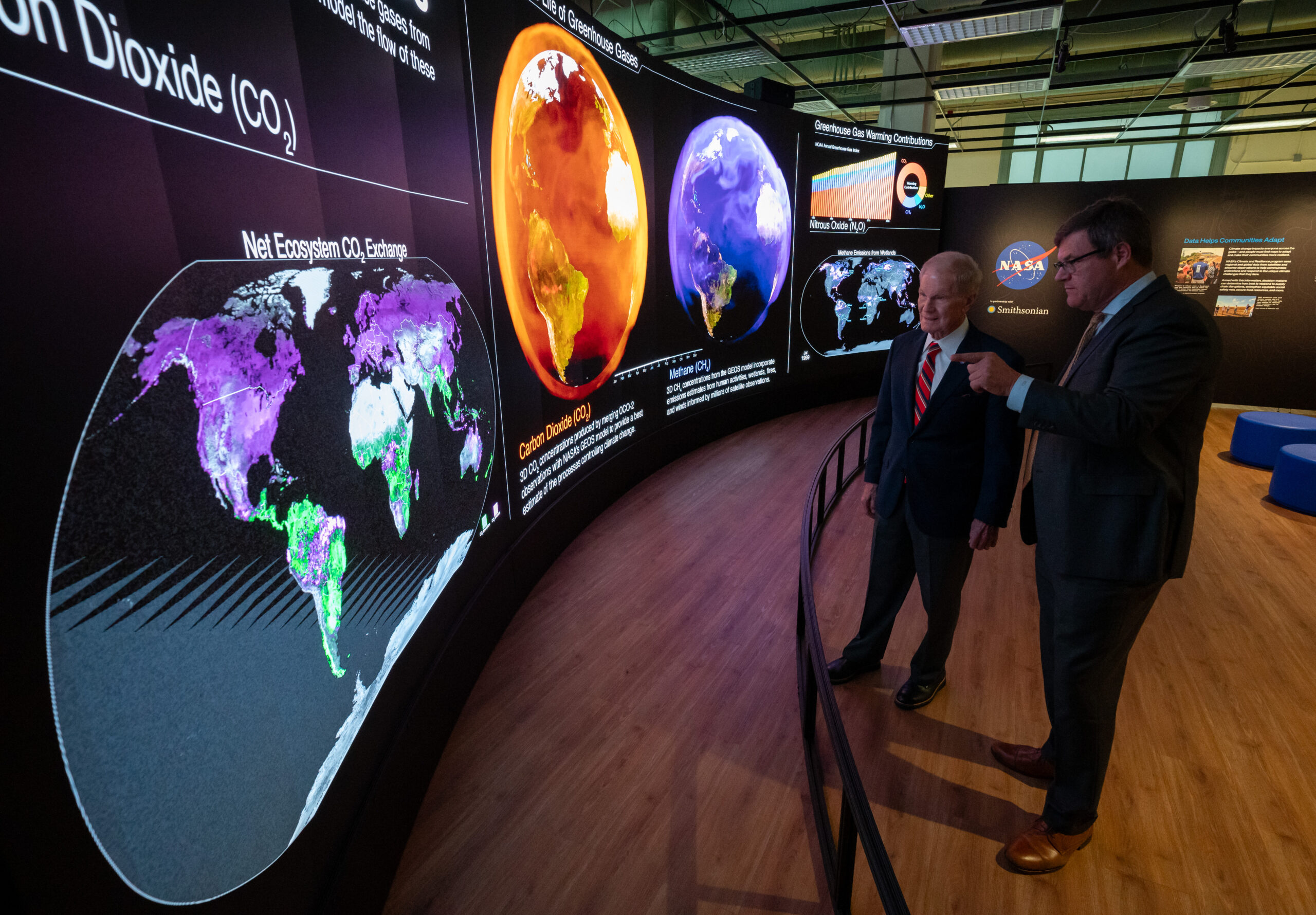NASA and Smithsonian Launch New Earth Information Center Exhibit
In an exciting development for science enthusiasts and environmentalists, NASA Administrator Bill Nelson, in collaboration with Kirk Johnson, the Sant Director of the Smithsonian’s National Museum of Natural History, unveiled a preview of a new exhibit from the Earth Information Center. This remarkable exhibit, set to open on October 8, 2024, marks the second physical location for the Earth Information Center, further expanding its reach and accessibility.
The exhibit, housed within the prestigious Smithsonian Institution in Washington, features an impressive 32-foot-long and 12-foot-high video wall. This dynamic display is designed to captivate visitors, offering a visual spectacle of Earth science data visualizations and videos. Through this medium, viewers will gain insight into the intricate systems that govern our planet, providing a comprehensive understanding of Earth’s interconnected systems and the pressing changes occurring in our environment.
Immersive Experience
The exhibit promises an immersive experience through its interpretive panels, which are strategically placed to guide visitors through the myriad ways NASA and the Smithsonian are studying and understanding our home planet. These panels serve as educational tools, breaking down complex scientific data into digestible information, making it accessible to a wide audience, including those with little to no prior knowledge of Earth sciences.
In an era where climate change and environmental sustainability are at the forefront of global discussions, this exhibit plays a crucial role in educating the public about the ongoing changes in our world. It seeks to foster a better understanding of how human activities impact the Earth and emphasizes the importance of sustainable practices to ensure a healthier planet for future generations.
Cutting-Edge Technology
The Earth Information Center exhibit utilizes cutting-edge technology to provide real-time data and visualizations. This technological aspect is crucial as it allows visitors to witness the current state of Earth’s ecosystems and observe changes as they happen. By leveraging satellite imagery and advanced data analytics, the exhibit provides a snapshot of Earth’s health, highlighting areas where climate change has had the most significant impact.
For example, visitors can explore interactive displays that show how rising temperatures are affecting polar ice caps, leading to increased sea levels. They can also delve into data on deforestation, ocean acidification, and biodiversity loss, all of which are critical issues that need immediate attention.
Collaborative Efforts
This exhibit is a testament to the successful collaboration between NASA and the Smithsonian. Both institutions bring their unique expertise to the table, combining NASA’s prowess in space exploration and Earth science with the Smithsonian’s rich history in education and public engagement. Together, they aim to inspire a new generation of scientists, environmentalists, and informed citizens who are motivated to take action in preserving our planet.
Why It Matters
Understanding Earth’s complex systems is more important than ever. With climate change posing a significant threat to ecosystems and human societies, exhibits like this one are vital in raising awareness and providing the public with the information they need to understand and address these challenges. By educating visitors on the science behind climate change and environmental degradation, the exhibit empowers individuals to make informed decisions and advocate for policies that protect our planet.
Public Access and Engagement
The exhibit will be open to the public starting October 8, 2024, and will remain on display through 2028. This extended duration ensures that a broad audience will have the opportunity to visit and learn from the exhibit. Schools, educators, and families are particularly encouraged to explore the exhibit, as it serves as an excellent educational resource for students of all ages.
In addition to the physical exhibit, the Earth Information Center offers an online platform where users can access a wealth of information about Earth sciences. This digital resource complements the physical exhibit, providing an opportunity for those unable to visit in person to engage with the content and stay informed about the latest developments in Earth science research.
Conclusion
In conclusion, the new Earth Information Center exhibit at the Smithsonian’s National Museum of Natural History is a significant milestone in science communication and public engagement. By combining the expertise and resources of NASA and the Smithsonian, the exhibit provides a unique platform for educating the public about Earth’s complex systems and the urgent need for sustainable practices. Through its innovative use of technology and engaging content, the exhibit not only informs but also inspires action towards a more sustainable future.
This exhibit is a must-visit for anyone interested in understanding our planet and the challenges it faces. It stands as a reminder of the importance of science in shaping our world and the role we all play in ensuring its preservation for generations to come.
For more Information, Refer to this article.


































